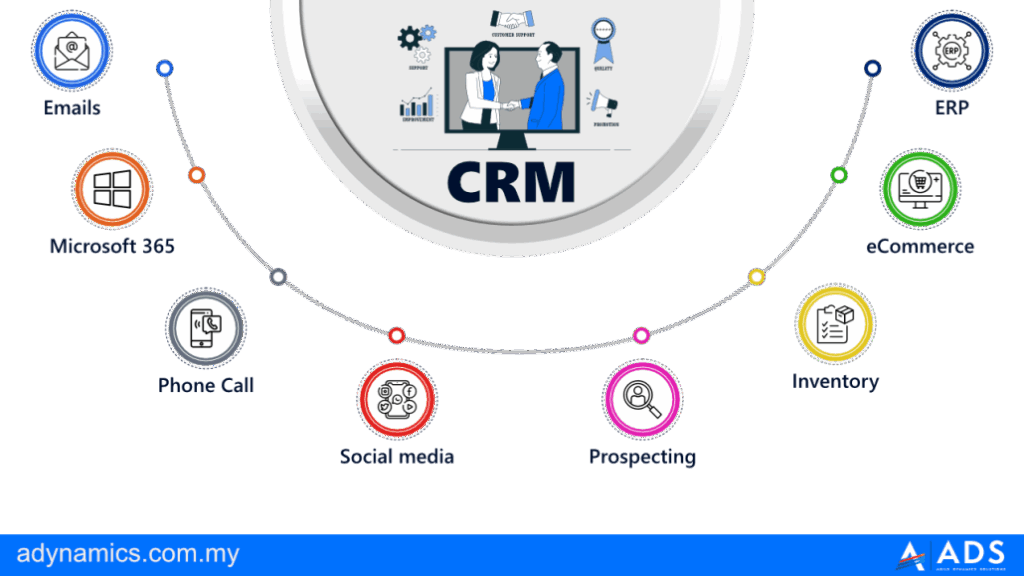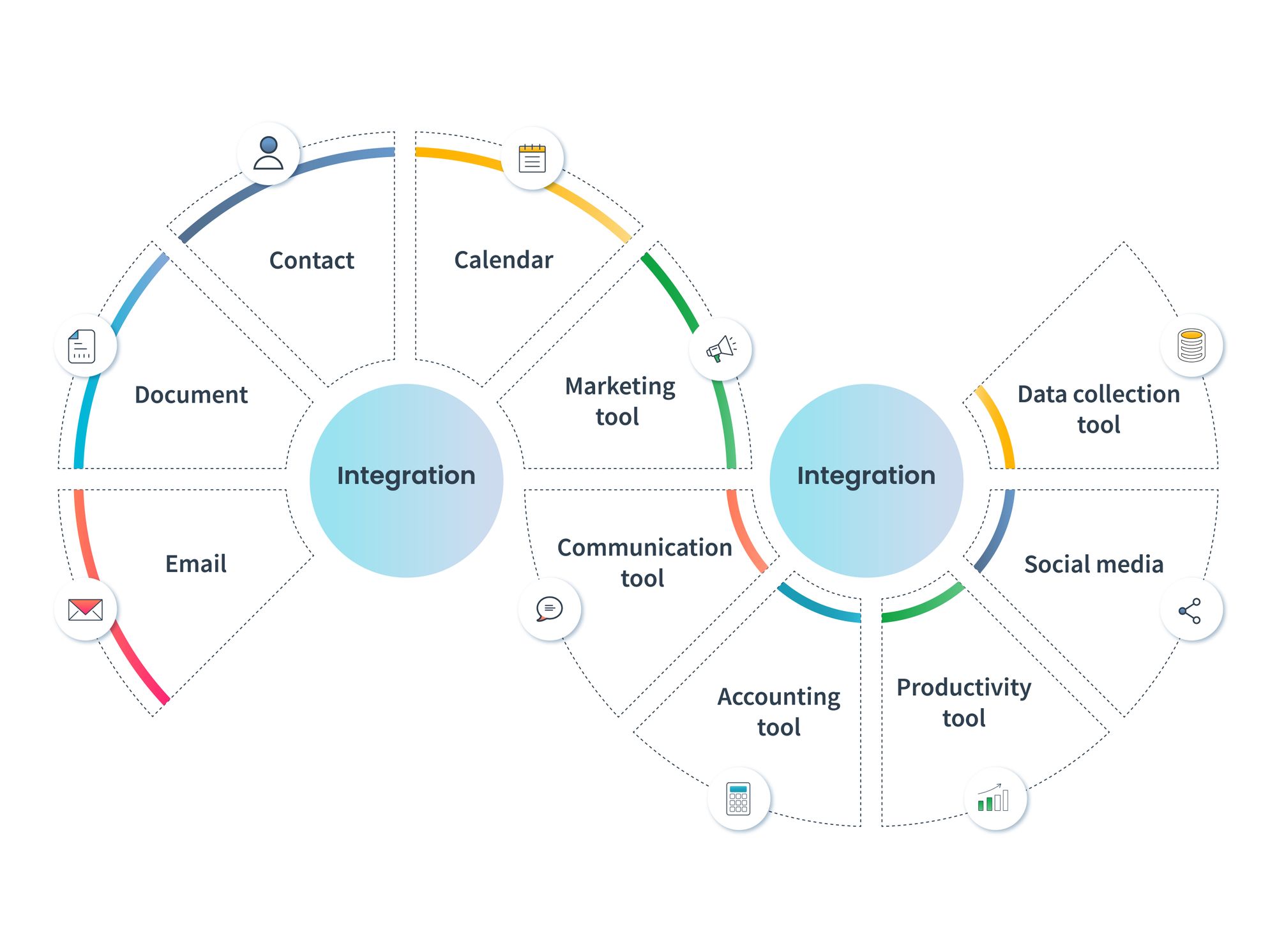
Unlocking the Power of Connection: CRM Integration and Aha!
In today’s dynamic business landscape, the ability to connect disparate systems and data silos is no longer a luxury – it’s a necessity. For product teams, this means seamlessly integrating their product management platform with their Customer Relationship Management (CRM) system. This integration is a game-changer, providing a 360-degree view of the customer and significantly enhancing product strategy and execution. This article delves into the transformative power of CRM integration with Aha!, a leading product management platform, exploring its benefits, implementation strategies, and real-world examples.
Imagine a world where your product roadmap is directly informed by customer feedback, sales insights, and support tickets. Where your team can effortlessly prioritize features based on their impact on customer satisfaction and revenue. This is the reality that CRM integration with Aha! unlocks. By connecting these two powerful platforms, you bridge the gap between your product vision and your customer’s needs, enabling data-driven decision-making and fostering a truly customer-centric product development process.
Why Integrate CRM with Aha!? The Benefits Explained
The advantages of integrating your CRM with Aha! are multifaceted, impacting various aspects of your product development lifecycle. Here’s a closer look at the key benefits:
1. Customer-Centric Product Development
At the heart of successful product development lies a deep understanding of your customers. CRM integration allows you to bring customer data directly into Aha!, providing valuable context for your product decisions. You can access customer demographics, purchase history, support interactions, and feedback, all within the Aha! environment. This holistic view empowers you to:
- Prioritize features based on customer needs: Identify the features that will have the greatest impact on customer satisfaction and retention.
- Understand customer pain points: Analyze support tickets and feedback to identify areas where your product falls short.
- Personalize the product experience: Tailor your product to meet the specific needs of different customer segments.
2. Enhanced Roadmapping and Prioritization
CRM integration transforms your roadmapping process from guesswork to data-driven decision-making. Sales data, customer feedback, and support interactions provide invaluable insights into the features that matter most to your customers. This information allows you to:
- Prioritize features based on their potential impact on revenue: Identify features that are most likely to drive sales and increase customer lifetime value.
- Align product development with sales and marketing efforts: Ensure that your product roadmap supports your overall business strategy.
- Improve the accuracy of your roadmap forecasts: Use data to predict the impact of new features and initiatives.
3. Improved Collaboration and Communication
CRM integration fosters better collaboration and communication between product, sales, marketing, and support teams. By sharing customer data and insights, these teams can work together more effectively to achieve common goals. This leads to:
- Improved alignment: Ensure that all teams are working towards the same objectives.
- Reduced silos: Break down the barriers between different departments.
- Faster decision-making: Make informed decisions based on a shared understanding of the customer.
4. Increased Efficiency and Productivity
CRM integration streamlines your product development workflow, saving you time and effort. Automate data entry, eliminate manual processes, and reduce the need to switch between different applications. This allows your team to:
- Focus on strategic initiatives: Free up time to work on more important tasks.
- Reduce errors: Minimize the risk of data entry errors.
- Improve overall productivity: Get more done in less time.
Getting Started: How to Integrate CRM with Aha!
Integrating your CRM with Aha! is a relatively straightforward process, but it’s crucial to plan carefully to ensure a successful implementation. Here’s a step-by-step guide:
1. Choose Your Integration Method
Aha! offers several integration options, including:
- Native Integrations: Aha! provides pre-built integrations with popular CRM platforms like Salesforce, HubSpot, and Zendesk. These integrations are often the easiest to set up and configure.
- API Integrations: For more complex integrations or if you use a CRM platform that doesn’t have a native integration, you can use the Aha! API to build a custom integration.
- Third-Party Integrations: Several third-party tools offer pre-built integrations between Aha! and various CRM platforms.
The best integration method depends on your specific needs and technical expertise.
2. Plan Your Data Mapping
Before you begin the integration, carefully plan how you want to map data between your CRM and Aha!. Consider the following questions:
- What customer data do you want to import into Aha!? (e.g., contact information, company details, purchase history, support tickets)
- How do you want to link customer data to your features and initiatives in Aha!?
- What fields do you want to synchronize between the two platforms?
Proper data mapping is crucial for ensuring that the integration provides the insights you need.
3. Configure the Integration
Once you’ve chosen your integration method and planned your data mapping, it’s time to configure the integration. The specific steps will vary depending on the integration method you choose, but generally involve:
- Connecting your CRM and Aha! accounts.
- Mapping the data fields you want to synchronize.
- Setting up any automation rules or workflows.
Follow the instructions provided by Aha! and your CRM platform to configure the integration.
4. Test the Integration
Before you start using the integration in production, thoroughly test it to ensure that it’s working correctly. Verify that data is being synchronized accurately and that any automation rules are functioning as expected. Test different scenarios to ensure that the integration can handle various situations.
5. Train Your Team
Once the integration is set up and tested, train your team on how to use it. Explain how to access and interpret the data from the CRM within Aha!, and how to use the integration to inform their product decisions. Provide ongoing support and training to ensure that your team is using the integration effectively.
Real-World Examples: How Companies Are Leveraging CRM Integration with Aha!
Let’s explore some real-world examples of how companies are leveraging CRM integration with Aha! to drive product success:
1. Identifying High-Value Customers
A SaaS company uses Salesforce to track customer data, including purchase history, usage patterns, and support interactions. By integrating Salesforce with Aha!, the product team can identify high-value customers who are most likely to benefit from new features. They then prioritize features that address the needs of these key customers, leading to increased customer satisfaction and retention.
2. Prioritizing Features Based on Sales Opportunities
A B2B software company integrates its CRM with Aha! to link sales opportunities to specific product features. The product team can see which features are most frequently requested by potential customers and prioritize those features in their roadmap. This ensures that the product is aligned with sales efforts and increases the likelihood of closing deals.
3. Proactively Addressing Customer Pain Points
An e-commerce company integrates its Zendesk support tickets with Aha!. The product team can analyze support tickets to identify common customer pain points and prioritize features that address these issues. This leads to improved customer satisfaction and reduces the number of support tickets.
4. Creating a Unified Customer View
A financial services company integrates its CRM, marketing automation platform, and support system with Aha!. This integration provides a 360-degree view of the customer, allowing the product team to understand the customer journey from end to end. They can then tailor the product experience to meet the specific needs of each customer segment, leading to increased customer loyalty and advocacy.
Best Practices for Successful CRM Integration with Aha!
To maximize the benefits of CRM integration with Aha!, consider these best practices:
1. Define Clear Objectives
Before you begin, clearly define your goals for the integration. What do you hope to achieve? What specific problems are you trying to solve? Having clear objectives will help you make informed decisions about data mapping, integration methods, and workflows.
2. Start Small and Iterate
Don’t try to integrate everything at once. Start with a small set of data and features, and then gradually expand the integration as you learn more. This allows you to test and refine the integration without disrupting your existing workflows.
3. Keep Data Clean and Accurate
The quality of your data is critical to the success of the integration. Ensure that your CRM data is clean, accurate, and up-to-date. Implement data validation rules and processes to prevent errors.
4. Automate Where Possible
Use automation to streamline your workflows and save time. Set up rules to automatically synchronize data between your CRM and Aha!, and to trigger actions based on certain events.
5. Regularly Review and Optimize
The integration is not a set-it-and-forget-it solution. Regularly review the integration to ensure that it’s meeting your needs. Identify areas for improvement and make adjustments as needed. Seek feedback from your team and use it to optimize the integration.
Troubleshooting Common Integration Challenges
Even with careful planning, you may encounter challenges during the integration process. Here’s how to troubleshoot some common issues:
1. Data Synchronization Errors
If data is not synchronizing correctly, check the following:
- Data mapping: Ensure that the data fields are mapped correctly between your CRM and Aha!.
- API limits: Some CRM platforms have API limits that may restrict the amount of data that can be synchronized at one time.
- Network connectivity: Verify that your CRM and Aha! accounts have a stable internet connection.
2. Duplicate Data
If you’re seeing duplicate data in Aha!, check the following:
- Data deduplication rules: Implement data deduplication rules in your CRM and Aha! to prevent duplicate records.
- Integration settings: Review the integration settings to ensure that you’re not accidentally importing the same data multiple times.
3. Performance Issues
If the integration is slowing down your workflow, consider the following:
- Data volume: If you’re synchronizing a large amount of data, consider reducing the scope of the integration.
- API calls: Optimize your API calls to reduce the load on your CRM and Aha! platforms.
- Hardware resources: Ensure that your CRM and Aha! platforms have sufficient hardware resources to handle the integration.
The Future of Product Management and CRM Integration
The integration of CRM and product management platforms is becoming increasingly important as businesses strive to become more customer-centric. As technology continues to evolve, we can expect to see even more sophisticated integrations that offer:
- Advanced analytics: Utilize AI and machine learning to analyze customer data and predict future trends.
- Personalized product experiences: Tailor product features and functionality to meet the specific needs of each customer.
- Real-time collaboration: Enable real-time collaboration between product, sales, marketing, and support teams.
The future of product management lies in the ability to deeply understand and respond to customer needs. CRM integration with Aha! is a key enabler of this future, providing product teams with the data and insights they need to build truly customer-centric products.
Conclusion: Embrace the Power of Integration
CRM integration with Aha! is a powerful strategy for product teams looking to gain a competitive edge. By connecting these two critical platforms, you can unlock a wealth of customer data, improve your roadmapping and prioritization, and foster better collaboration across your organization. While implementation requires careful planning and execution, the benefits – from enhanced customer understanding to increased efficiency – are well worth the effort. Embrace the power of integration and transform your product development process today.

